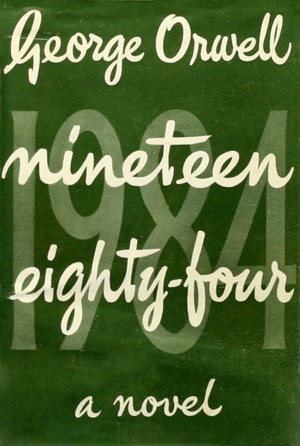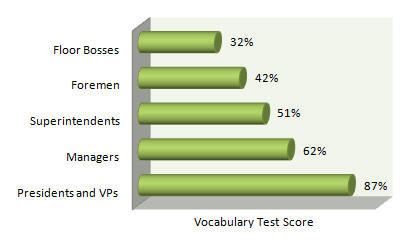8.1: Outcome: Vocabulary
- Page ID
- 175806
\( \newcommand{\vecs}[1]{\overset { \scriptstyle \rightharpoonup} {\mathbf{#1}} } \)
\( \newcommand{\vecd}[1]{\overset{-\!-\!\rightharpoonup}{\vphantom{a}\smash {#1}}} \)
\( \newcommand{\dsum}{\displaystyle\sum\limits} \)
\( \newcommand{\dint}{\displaystyle\int\limits} \)
\( \newcommand{\dlim}{\displaystyle\lim\limits} \)
\( \newcommand{\id}{\mathrm{id}}\) \( \newcommand{\Span}{\mathrm{span}}\)
( \newcommand{\kernel}{\mathrm{null}\,}\) \( \newcommand{\range}{\mathrm{range}\,}\)
\( \newcommand{\RealPart}{\mathrm{Re}}\) \( \newcommand{\ImaginaryPart}{\mathrm{Im}}\)
\( \newcommand{\Argument}{\mathrm{Arg}}\) \( \newcommand{\norm}[1]{\| #1 \|}\)
\( \newcommand{\inner}[2]{\langle #1, #2 \rangle}\)
\( \newcommand{\Span}{\mathrm{span}}\)
\( \newcommand{\id}{\mathrm{id}}\)
\( \newcommand{\Span}{\mathrm{span}}\)
\( \newcommand{\kernel}{\mathrm{null}\,}\)
\( \newcommand{\range}{\mathrm{range}\,}\)
\( \newcommand{\RealPart}{\mathrm{Re}}\)
\( \newcommand{\ImaginaryPart}{\mathrm{Im}}\)
\( \newcommand{\Argument}{\mathrm{Arg}}\)
\( \newcommand{\norm}[1]{\| #1 \|}\)
\( \newcommand{\inner}[2]{\langle #1, #2 \rangle}\)
\( \newcommand{\Span}{\mathrm{span}}\) \( \newcommand{\AA}{\unicode[.8,0]{x212B}}\)
\( \newcommand{\vectorA}[1]{\vec{#1}} % arrow\)
\( \newcommand{\vectorAt}[1]{\vec{\text{#1}}} % arrow\)
\( \newcommand{\vectorB}[1]{\overset { \scriptstyle \rightharpoonup} {\mathbf{#1}} } \)
\( \newcommand{\vectorC}[1]{\textbf{#1}} \)
\( \newcommand{\vectorD}[1]{\overrightarrow{#1}} \)
\( \newcommand{\vectorDt}[1]{\overrightarrow{\text{#1}}} \)
\( \newcommand{\vectE}[1]{\overset{-\!-\!\rightharpoonup}{\vphantom{a}\smash{\mathbf {#1}}}} \)
\( \newcommand{\vecs}[1]{\overset { \scriptstyle \rightharpoonup} {\mathbf{#1}} } \)
\( \newcommand{\vecd}[1]{\overset{-\!-\!\rightharpoonup}{\vphantom{a}\smash {#1}}} \)
\(\newcommand{\avec}{\mathbf a}\) \(\newcommand{\bvec}{\mathbf b}\) \(\newcommand{\cvec}{\mathbf c}\) \(\newcommand{\dvec}{\mathbf d}\) \(\newcommand{\dtil}{\widetilde{\mathbf d}}\) \(\newcommand{\evec}{\mathbf e}\) \(\newcommand{\fvec}{\mathbf f}\) \(\newcommand{\nvec}{\mathbf n}\) \(\newcommand{\pvec}{\mathbf p}\) \(\newcommand{\qvec}{\mathbf q}\) \(\newcommand{\svec}{\mathbf s}\) \(\newcommand{\tvec}{\mathbf t}\) \(\newcommand{\uvec}{\mathbf u}\) \(\newcommand{\vvec}{\mathbf v}\) \(\newcommand{\wvec}{\mathbf w}\) \(\newcommand{\xvec}{\mathbf x}\) \(\newcommand{\yvec}{\mathbf y}\) \(\newcommand{\zvec}{\mathbf z}\) \(\newcommand{\rvec}{\mathbf r}\) \(\newcommand{\mvec}{\mathbf m}\) \(\newcommand{\zerovec}{\mathbf 0}\) \(\newcommand{\onevec}{\mathbf 1}\) \(\newcommand{\real}{\mathbb R}\) \(\newcommand{\twovec}[2]{\left[\begin{array}{r}#1 \\ #2 \end{array}\right]}\) \(\newcommand{\ctwovec}[2]{\left[\begin{array}{c}#1 \\ #2 \end{array}\right]}\) \(\newcommand{\threevec}[3]{\left[\begin{array}{r}#1 \\ #2 \\ #3 \end{array}\right]}\) \(\newcommand{\cthreevec}[3]{\left[\begin{array}{c}#1 \\ #2 \\ #3 \end{array}\right]}\) \(\newcommand{\fourvec}[4]{\left[\begin{array}{r}#1 \\ #2 \\ #3 \\ #4 \end{array}\right]}\) \(\newcommand{\cfourvec}[4]{\left[\begin{array}{c}#1 \\ #2 \\ #3 \\ #4 \end{array}\right]}\) \(\newcommand{\fivevec}[5]{\left[\begin{array}{r}#1 \\ #2 \\ #3 \\ #4 \\ #5 \\ \end{array}\right]}\) \(\newcommand{\cfivevec}[5]{\left[\begin{array}{c}#1 \\ #2 \\ #3 \\ #4 \\ #5 \\ \end{array}\right]}\) \(\newcommand{\mattwo}[4]{\left[\begin{array}{rr}#1 \amp #2 \\ #3 \amp #4 \\ \end{array}\right]}\) \(\newcommand{\laspan}[1]{\text{Span}\{#1\}}\) \(\newcommand{\bcal}{\cal B}\) \(\newcommand{\ccal}{\cal C}\) \(\newcommand{\scal}{\cal S}\) \(\newcommand{\wcal}{\cal W}\) \(\newcommand{\ecal}{\cal E}\) \(\newcommand{\coords}[2]{\left\{#1\right\}_{#2}}\) \(\newcommand{\gray}[1]{\color{gray}{#1}}\) \(\newcommand{\lgray}[1]{\color{lightgray}{#1}}\) \(\newcommand{\rank}{\operatorname{rank}}\) \(\newcommand{\row}{\text{Row}}\) \(\newcommand{\col}{\text{Col}}\) \(\renewcommand{\row}{\text{Row}}\) \(\newcommand{\nul}{\text{Nul}}\) \(\newcommand{\var}{\text{Var}}\) \(\newcommand{\corr}{\text{corr}}\) \(\newcommand{\len}[1]{\left|#1\right|}\) \(\newcommand{\bbar}{\overline{\bvec}}\) \(\newcommand{\bhat}{\widehat{\bvec}}\) \(\newcommand{\bperp}{\bvec^\perp}\) \(\newcommand{\xhat}{\widehat{\xvec}}\) \(\newcommand{\vhat}{\widehat{\vvec}}\) \(\newcommand{\uhat}{\widehat{\uvec}}\) \(\newcommand{\what}{\widehat{\wvec}}\) \(\newcommand{\Sighat}{\widehat{\Sigma}}\) \(\newcommand{\lt}{<}\) \(\newcommand{\gt}{>}\) \(\newcommand{\amp}{&}\) \(\definecolor{fillinmathshade}{gray}{0.9}\)Evaluate vocabulary usage
Consider the following passage by author Luciano Passuello, discussing the virtue of language development.
Vocabulary Opens Your Mind
My favorite story that illustrates the importance of vocabulary is from George Orwell’s dystopian novel Nineteen Eighty-Four.
 In a dark view of the future, Orwell pictured a world ruled by an authoritarian government that controls every citizen. In this world, no one escapes being watched by video cameras, which are present even inside people’s homes. But when it comes to control, there was something even more effective than the ubiquitous cameras, and that was the official language: Newspeak.
In a dark view of the future, Orwell pictured a world ruled by an authoritarian government that controls every citizen. In this world, no one escapes being watched by video cameras, which are present even inside people’s homes. But when it comes to control, there was something even more effective than the ubiquitous cameras, and that was the official language: Newspeak.
Newspeak is rigidly controlled by the government, and it’s the only language whose vocabulary gets smaller every year. In Newspeak, words that convey subversive thoughts – like “freedom” – simply don’t exist anymore. By systematically removing or distorting the meaning of words, the government takes away the tools to question its authority. Without words to exchange or perpetuate ideas, these ideas start to gradually disappear from people’s minds. Without not even being aware of it, people became completely powerless and easily controlled.
Although this example may be a bit extreme, it serves to illustrate the point: when you lack words, you shut down new insights and lines of reasoning. People who possess a limited vocabulary have a much tougher time breaking out from old patterns of thought or questioning. By the same token, each new word you learn opens a new avenue of thought, empowering you to think or take action in ways you could never have before.
The basic tool for the manipulation of reality is the manipulation of words. If you can control the meaning of words, you can control the people who must use the words. – Philip K. Dick
Vocabulary Gets You Results
The researcher Johnson O’Connor, known for his studies about the impact of vocabulary on people’s lives, has drawn many amazing conclusions from a vast amount of tests and experiments, performed in more than 20 years of research.
A significant part of his research observed successful people in many walks of life, trying to correlate their success with factors such as gender, age, scholarship levels and many others, including vocabulary level. He tested people on the most diverse endeavors, such as students about to take their SATs, engineers working in their areas of expertise, executives in large corporations, and many others.
He always found the same results, no matter which area he looked at, and no matter how he analyzed the data: a person’s vocabulary level is the best single predictor of occupational success.
This astounding discovery can be illustrated by the following study, made with managers in 39 large manufacturing companies. Below are the average results of an extensive vocabulary test, averaged and grouped by hierarchical level:
O’Connor took extreme care to statistically isolate variables that could distort the results. Scholarship level and age, for example, were taken into account to make sure it was indeed vocabulary, and not something related, that correlated with success. His studies also show that vocabulary usually comes before achievement, and not as a consequence of it. Even if we’re not able to ultimately prove the correlation, it’s hard to ignore O’Connor’s findings.
What determines professional success? Especially for knowledge workers, I would risk saying professional success depends entirely on thinking and communication skills. If you analyze every activity you perform as a knowledge worker, you’ll always get down to either thinking (as the activity that leads to the creation of something new) or communicating (as the activity that gets your ideas across). Well, if words are tools for both thought and communication, it’s no surprise that those who master them have a much greater chance of success – not only professionally, but in their lives as a whole.
What You Will Learn To Do
- evaluate strategies for defining words from context
- evaluate additional tools for defining words (i.e. dictionaries and reference works)
- evaluate strategies for retaining and using new words in a working vocabulary
- Outcome: Vocabulary. Provided by: Lumen Learning. License: CC BY: Attribution
- Top 3 Reasons to Improve Your Vocabulary. Authored by: Luciano Passuello. Provided by: Litemind. Located at: https://litemind.com/top-3-reasons-to-improve-your-vocabulary/. License: CC BY-NC: Attribution-NonCommercial
- Image of Nineteen Eighty-Four. Provided by: Secker and Warburg Publishers. Located at: https://en.wikipedia.org/wiki/File:1984first.jpg. License: Public Domain: No Known Copyright


